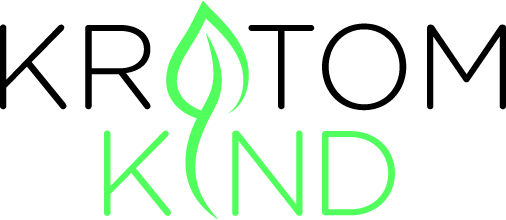About US

Organic
Kratom Leaves are organically grown and imported directly from plantation to Los Angeles California USA.

USA Tested
Third party lab tested, paperwork available upon request, 100% Satisfaction Guaranteed
Powerful
Medicinal Kratom picked from aged trees, recognized for their quality.
Founders MESSAGE
Kratom Kind saw the demand for Kratom and customers looking for a business they could trust. We are a different kind of Kratom Company. Our business model is a philanthropic enterprise that offers customers safe, natural selections of Pure Organic Kratom.
What is Kratom made of?
Here is a list of all the different varieties of Alkaloids and their individual effects that can be found in the Kratom leaf. Each has been studied with references that can be found at the bottom of this page (“Kratom Alkaloids & Effects | Kratom Science,” 2018):
Paynantheine (9%) & speciogynine (7%) – smooth muscle relaxing effects.
7-hydroxymitragynine (2%) – reported analgesic, antitussive, and anti-diarrheal properties. It is for these potential benefits that kratom is sometimes used to ease opiate withdrawal symptoms. It is believed that 7-hydroxymitragynine is 30 times stronger than mitragynine and 10 times stronger than morphine.
Speciogynine (1%) weak opioid antagonist effects
Ajmalicine (<1%) researched as a cerebrocirculant, anti-aggregant/anticoagulant, anti-adrenergic, sedative, anticonvulsant, and smooth muscle relaxer.
Corynantheidine (<1%), corynoxine A (<1%), corynoxine B (<1%), mitrafoline (<1%), isomitrafoline (<1%), oxindole A (<1%) & oxindale B (<1%) are opioid receptor agonists, some of which act as calcium channel blockers and anti-locomotive agents.
Mitraphylline (<1%) vasodilation, anti-hypertension, smooth muscle relaxing, diuretic, anti-amnesic, immunostimulant, and anti-leukemic effects
Isomitraphylline (<1%) may act as an immunostimulant and anti-leukemic agent.
Isorhynchophylline (<1%) possibly boosts the immune system.
Rhynchophylline (<1%) may have a major role in blood pressure as it acts vasodilator, antihypertensive agent, and calcium channel blocker. It is also reported to exhibit anti-inflammatory, antipyretic, anti-arrhythmic, and anthelmintic properties.
Speciophylline (<1%) studied for its benefits for those with leukemia
Speciofoline (<1%), isospeciofoline (<1%), ciliaphylline (<1%), mitraciliatine (<1%), mitragynaline (<1%), mitragynalinic acid (<1%) and corynantheidalinic acid show antitussive and analgesic effects.
The content of each alkaloid inside the Kratom leaf varies with the geographical location and age of the source tree.
Article References
Agrawal, M., Nandini, D., & Sharma, S. C. (n.d.). (18) (PDF) Herbal remedies for the treatment of hypertension. Retrieved April 1, 2019
Al-Hasani, R., & Bruchas, M. R. (2011). Molecular Mechanisms of Opioid Receptor-dependent Signaling and Behavior: Anesthesiology, 1.
Babin, Boyer, Brown, Garcia-Romeu, Griffiths, Grundmann, Hemby, Henningfield, McCurdy, Raffa, Swogger, & Walsh (2018). Comment on FDA Kratom CSA 8-Factor Analysis.
Boyer, E. W., Babu, K. M., Adkins, J. E., McCurdy, C. R., & Halpern, J. H. (2008). Self-treatment of opioid withdrawal using kratom (Mitragynia speciosa Korth). Addiction (Abingdon, England), 103(6), 1048–1050.
Greene, S. L. (2013). Chapter 15 – Tryptamines. In P. I. Dargan & D. M. Wood (Eds.), Novel Psychoactive Substances (pp. 363–381).
Henningfield, J.E., Fant, R.V. & Wang, D.W. The abuse potential of kratom according to the 8 factors of the controlled substances act: implications for regulation and research. Psychopharmacology (2018) 235: 573.
Janowsky, D. S., El-Yousef, M. K., & Davis, J. M. (1974). Acetylcholine and depression. Psychosomatic Medicine, 36(3), 248–257.
Kikura-Hanajiri, R., Kawamura, M., Maruyama, T., Kitajima, M., Takayama, H., & Goda, Y. (2009). Simultaneous analysis of mitragynine, 7-hydroxymitragynine, and other alkaloids in the psychotropic plant “kratom” (Mitragyna speciosa) by LC-ESI-MS. Forensic Toxicology, 27(2), 67–74.
Koehbach, J., & Gruber, C. (2015). Rubiaceae – an overview. Retrieved April 1, 2019
Kratom Alkaloids & Effects | Kratom Science. (2018). Retrieved April 1, 2019
Kruegel, A. C., Gassaway, M. M., Kapoor, A., Váradi, A., Majumdar, S., Filizola, M., … Sames, D. (2016). Synthetic and Receptor Signaling Explorations of the Mitragyna Alkaloids: Mitragynine as an Atypical Molecular Framework for Opioid Receptor Modulators. Journal of the American Chemical Society, 138(21), 6754–6764.
Kukula-Koch, W. A., & Widelski, J. (2017). Alkaloids – an overview | ScienceDirect Topics. Retrieved April 1, 2019
Mossadeq, W. M. S., Sulaiman, M. R., Mohamad, T. A. T., Chiong, H. S., Zakaria, Z. A., Jabit, M. L., … Israf, D. A. (2009). Anti-Inflammatory and Antinociceptive Effects of Mitragyna speciosa Korth Methanolic Extract. Medical Principles and Practice, 18(5), 378–384.
PubChem. (2019, March 10). Mitragynine. Retrieved April 1, 2019
PubChem. (2019, March 20). Leu-enkephalin. Retrieved April 1, 2019
Rojas-Duran, R., Gonzalez-Aspajo, G., Ruiz-Martel, C., Bourdy, G., Doroteo, V., Adelaida Albàn Castillo, J., … Deharo, E. (2012, July). Anti-inflammatory activity of Mitraphylline isolated from Uncaria tomentosa bark. Retrieved April 1, 2019
Suhaimi, F. W., Yusoff, N. H. M., Hassan, R., Mansor, S. M., Navaratnam, V., Müller, C. P., & Hassan, Z. (2016). Neurobiology of Kratom and its main alkaloid mitragynine. Brain Research Bulletin, 126, 29–40.
Swogger MT, Hart E, Erowid F, Erowid E, Trabold N, Yee K, Parkhurst KA, Priddy BM, Walsh Z (2015) Experiences of kratom users: a qualitative analysis. J Psychoactive Drugs 47(5):360–367.
UF College of Pharmacy. (2018). UF College of Pharmacy receives $3.5 million NIDA grant to bolster kratom research. Retrieved April 12, 2019
Yuan, D., Ma, B., Yang, J., Xie, Y., Wang, L., Zhang, L., … Wu, C. (2009). Anti-inflammatory effects of rhynchophylline and isorhynchophylline in mouse N9 microglial cells and the molecular mechanism. International Immunopharmacology, 9(13–14), 1549–1554.





